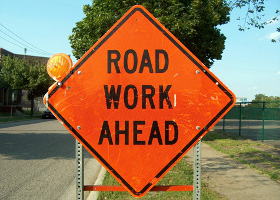 There’s a little part on your vehicle you may not know about, but when it develops a problem, getting it fixed sooner rather than later can save you a lot of money in the long run. Have I got your attention now?
There’s a little part on your vehicle you may not know about, but when it develops a problem, getting it fixed sooner rather than later can save you a lot of money in the long run. Have I got your attention now?
This part is called a ball joint boot. Ball joints are part of your suspension and allow your front wheels to move up and down and turn left and right. This boot covers and protects your ball joint.
Your suspension is, of course, exposed to nasty stuff getting kicked up from the road. Stuff like rocks, salt, water, dirt, and chunks of asphalt. If all that debris were constantly hitting your ball joints, they wouldn’t last very long. So someone had the bright idea to include protective “boots” that go over the ball joints. Great idea and they work…for a while. Just like every other part on our vehicles, they will need to be replaced eventually.
These boots not only protect against debris but they also protect against heat and friction. Because of this, they must be flexible. In addition to keeping contaminants out of your ball joints, they also keep lubricants in and allow the hot grease to expand. This is vital to make sure metal parts are moving smoothly.
Sometimes the ball joint boots get damaged after constant assault by road junk or temperature extremes. Other times they just get old. Rubber and other flexible materials can eventually just wear out (think of old rubber bands that break because they’re brittle from age). A regular suspension inspection will assess the condition of your ball joint boots. When your Express Car Care service adviser says there’s a problem with one of your ball joint boots, heed the warning. If they have a tear in them and aren’t replaced, lubricant can escape the ball joint and debris can get in and start creating a destructive mess.
Also keep in mind that if a ball joint is bad on one side, the other side might be on the verge of going too. Replacing both ball joints and ball joint boots at the same time saves time and money and just makes sense.

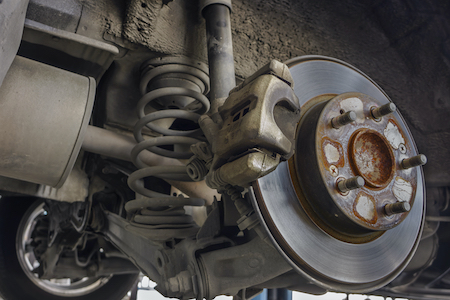 Every component of the suspension system is placed together with kinks, bushing, bearings, and joints. These connections can be made from metal, plastic, or rubber, and wear down over time.
Every component of the suspension system is placed together with kinks, bushing, bearings, and joints. These connections can be made from metal, plastic, or rubber, and wear down over time.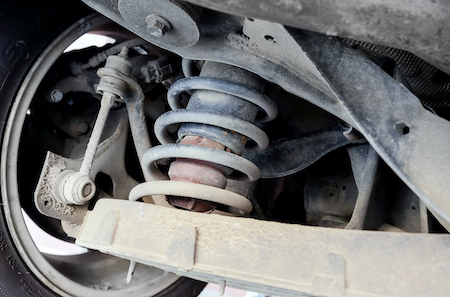 Rack and pinion steering connects the steering wheel and steering column to a rack, which moves a piston as the wheels turn.
Rack and pinion steering connects the steering wheel and steering column to a rack, which moves a piston as the wheels turn. Trucks are designed to carry, haul, and tow. They are designed in similar fashion, with a basic cab and some type of chassis attached to the rear. Pickup trucks are trucks with a separate frame and an open bed. They take a design from each category – cars and trucks – and combine them into one vehicle. Pickups are a smaller version of a truck, designed for multi-use. They are compact, perfect for family use as well as functional enough to use for smaller business.
Trucks are designed to carry, haul, and tow. They are designed in similar fashion, with a basic cab and some type of chassis attached to the rear. Pickup trucks are trucks with a separate frame and an open bed. They take a design from each category – cars and trucks – and combine them into one vehicle. Pickups are a smaller version of a truck, designed for multi-use. They are compact, perfect for family use as well as functional enough to use for smaller business. Oil changes are an important part of any car maintenance routine, but especially for a vehicle you hope to keep for years to come. While you may use your car simply to run around town running errands and bringing the kids to daily activities, your truck may do a variety of different things during the day. Drop the kids off at school, pick up a load of lumber, head out on dirt roads to camp for the night – it can experience a variety of road conditions all in the course of a few hours. Because of this variance, you should ensure the oil is changed frequently to keep all working parts operating correctly. Heavy hauling can deteriorate certain parts quicker than normal driving conditions. Error on the side of getting the oil changed on a frequent schedule.
Oil changes are an important part of any car maintenance routine, but especially for a vehicle you hope to keep for years to come. While you may use your car simply to run around town running errands and bringing the kids to daily activities, your truck may do a variety of different things during the day. Drop the kids off at school, pick up a load of lumber, head out on dirt roads to camp for the night – it can experience a variety of road conditions all in the course of a few hours. Because of this variance, you should ensure the oil is changed frequently to keep all working parts operating correctly. Heavy hauling can deteriorate certain parts quicker than normal driving conditions. Error on the side of getting the oil changed on a frequent schedule.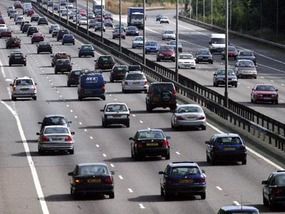 The thermostat is part of your cooling system. The thermostats in your vehicle perform a similar function to the thermostats in your home. At home, you set your thermostat to maintain a comfortable temperature range. Then when your home gets too hot, the air conditioning kicks on or when it gets too cool, the heater turns on.
The thermostat is part of your cooling system. The thermostats in your vehicle perform a similar function to the thermostats in your home. At home, you set your thermostat to maintain a comfortable temperature range. Then when your home gets too hot, the air conditioning kicks on or when it gets too cool, the heater turns on. Motor oil isn’t the only thing your truck needs. While this is the one fluid you should monitor and replace regularly, other fluids need occasional work too. Engine coolant helps keep your engine cool and prevents it from overheating. You’ll find the cap identified by a warning label and illustration to ensure you never open it up while the engine is hot. It should also be checked and filled according to manufacturer’s guidelines. It’s also a good idea to fill up your windshield washer fluid reservoir regularly, and even keep a jug of the cleaner somewhere in your car. The more time you spend on dusty, off roads, the more you’ll need to add to help you drive. While there are other fluids – brake fluid, for example – letting one of our mechanics evaluate your systems will ensure the equipment isn’t compromised, preventing you from driving.
Motor oil isn’t the only thing your truck needs. While this is the one fluid you should monitor and replace regularly, other fluids need occasional work too. Engine coolant helps keep your engine cool and prevents it from overheating. You’ll find the cap identified by a warning label and illustration to ensure you never open it up while the engine is hot. It should also be checked and filled according to manufacturer’s guidelines. It’s also a good idea to fill up your windshield washer fluid reservoir regularly, and even keep a jug of the cleaner somewhere in your car. The more time you spend on dusty, off roads, the more you’ll need to add to help you drive. While there are other fluids – brake fluid, for example – letting one of our mechanics evaluate your systems will ensure the equipment isn’t compromised, preventing you from driving. That was the starting point for traction control. As engineers looked at how well ABS controlled skidding, they also played with sensors, actuators, and computer technology to detect and prevent tires from spinning.
That was the starting point for traction control. As engineers looked at how well ABS controlled skidding, they also played with sensors, actuators, and computer technology to detect and prevent tires from spinning. Question: My car failed its emissions test -what do I need to do?
Question: My car failed its emissions test -what do I need to do?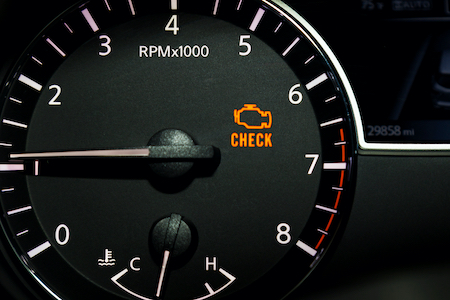 An EVAP leak is a problem somewhere in the evaporative emission control system (EVAP). The EVAPs purpose is to contain any fumes released from gasoline, and prevent them from seeping out and impacting the environment.
An EVAP leak is a problem somewhere in the evaporative emission control system (EVAP). The EVAPs purpose is to contain any fumes released from gasoline, and prevent them from seeping out and impacting the environment.